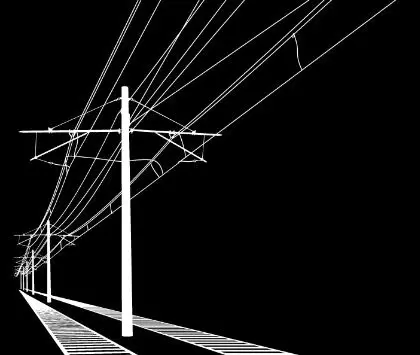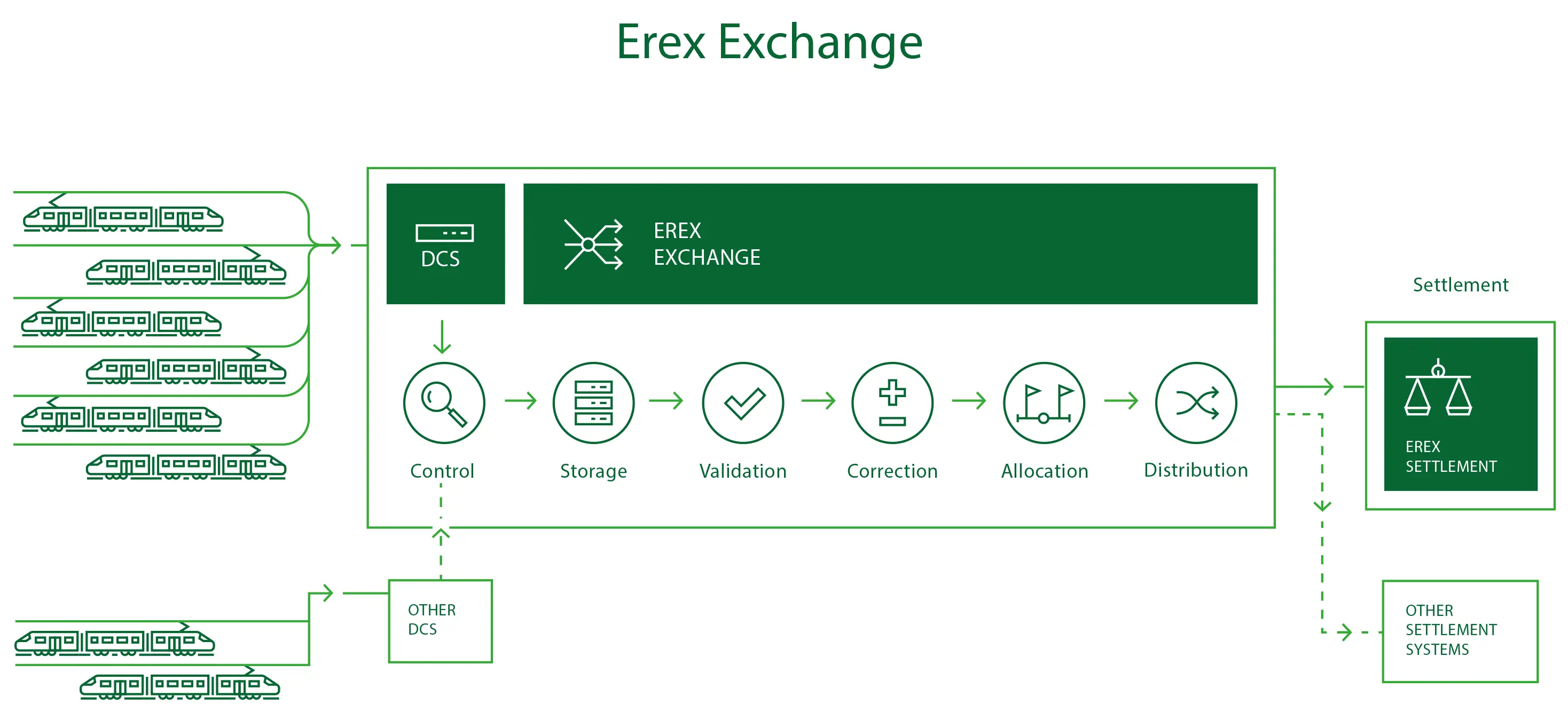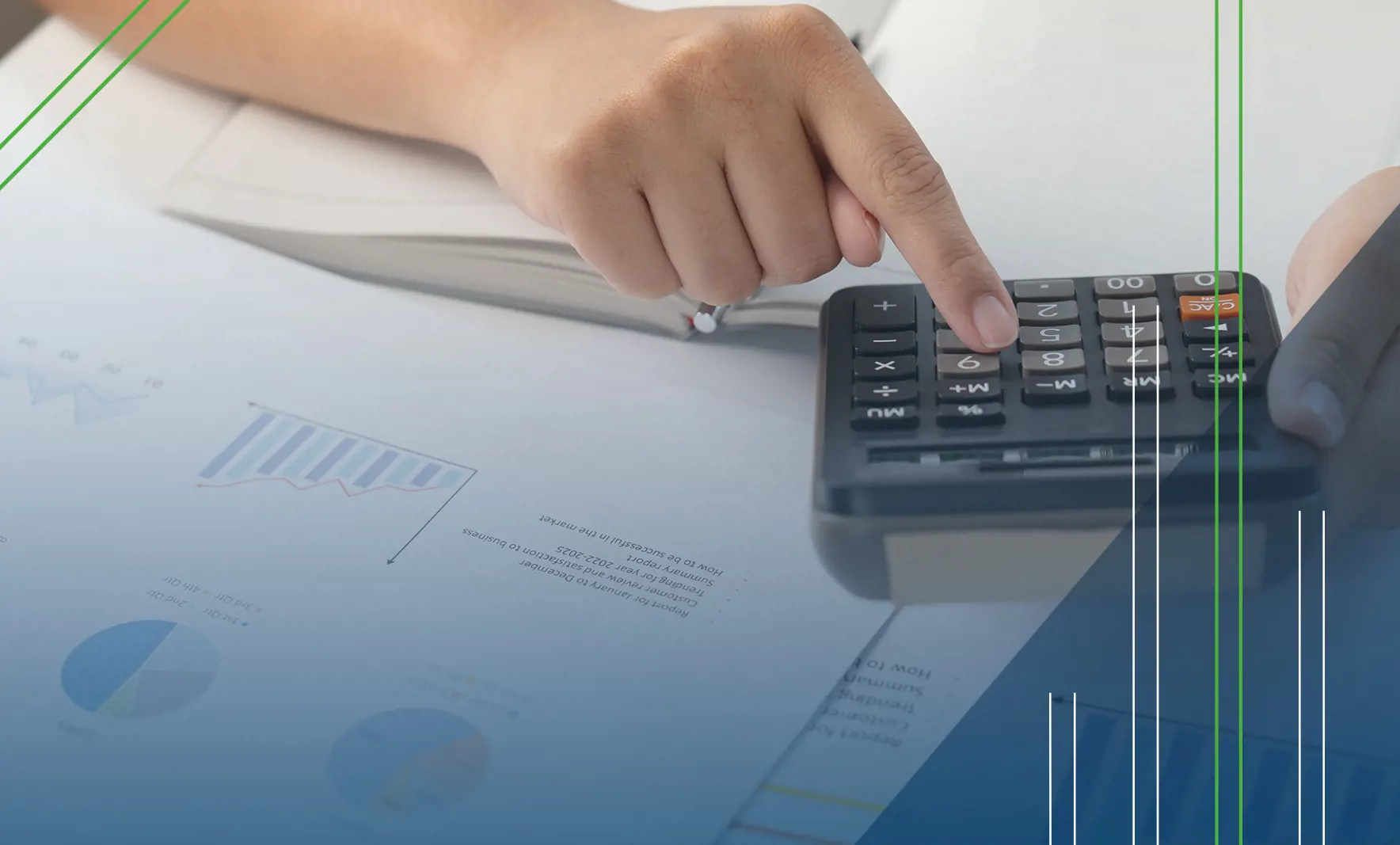Solutions
Eress services are designed to solve all onboard energy needs of Infrastructure Managers in Europe.

For infrastructure managers
When joining Eress collaboration, Infrastructure Managers ensure transparency when invoicing Train Companies and/or Vehicle Keepers.
This allows competition in each single country and ensures energy collaboration across borders. Infrastructure Managers need to closely work together building railways as a viable competitor against other transport modes.
Eress consists today of ten partners working towards the standardisation of railway energy across Europe. We work together developing, implementing, and supplying Eress railway energy services.
From data collecting to invoicing of energy
Eress complete solution
Energy data coming from trains can be estimated (traditional method, where the Infrastructure Manager calculates a price for the energy used based on tonne/km) or metered (newer method, where the real energy consumed is measured by energy meters installed onboard trains).
The energy consumed by each train is sent to a Data Collecting System (DCS). The complete Energy data then goes to Eress Exchange, where it is sorted out (correct, incorrect) and allocated to the right country (inside or outside of Eress countries). Each Infrastructure Manager settles its own data coming from Eress Exchange, according to its own national rules, before issuing a final invoice to the Train Company that has run the train. Train Companies get a correct invoice of energy when running in Eress countries.


Eress DCS solution
Eress DCS (Data Collecting System) service gathers all data coming from energy meters
This includes energy and non-energy related data.
The process of data collecting is automated. Data storage is centralized.
All data is gathered, according to EN50463-2017. This collection of data is continuously monitored to avoid any loss.
Eress Exchange solution
Exchange of energy data across borders is still a difficult task for Infrastructure Managers in many countries in Europe.
This becomes even more challenging when data needs to be exchanged according to the latest EU standards. This is the reason why Eress developed its Exchange solution, making it possible for Infrastructure Managers to correctly exchange data with neighbouring countries, while fulfilling all EU requirements. The complete data gathered in any Data Collecting System is validated and allocated in Eress Exchange.


Eress Settlement solution
An Infrastructure Manager needs to correctly settle the energy consumed by all trains in its country. This process needs to be correct for trains equipped with energy meters, for trains having no meters and for trains that partially use meters. This is indispensable to transparently and accurately invoice all Train Companies running in a country.
After the metering data is verified and allocated in Eress Exchange, the national rules are applied by the Infrastructure Manager in Eress Settlement.
This service allows an Infrastructure Manager to define its own national rules for invoicing Train Companies running in the country. These rules include costs, tariffs and taxes described in the Network statement of each country. Each Infrastructure Manager defines how losses of energy, non-metered and parked trains should be treated. In the illustration on the left you can see all variables that an Infrastructure Manager defines when using this Eress service.
Statistics
Eress has gathered energy data since 2007.
Our reports and statistics can help both Infrastructure Managers and Train Companies. Infrastructure Managers and Train Companies get their own data reported in Eress system.
This means that Infrastructure Managers get all energy data from their own countries. Train Companies and vehicle Keepers get only their own data, so that they can have a clear overview of their consumed energy and their meters. They get all their data used as basis for their invoices.


EMS
Energy Metering systems are not offered directly by Eress
Eress does not offer energy meters, but works together with all existing suppliers in the market.
For Train Companies & Vehicle Keepers
Train operators and locomotive leasing companies running in Eress countries have access to their own data 24/7.
They can extract data coming from their own traction units registered in Eress Exchange module. This allows them to see all data that has been used for generating their own energy invoices.
Eress reports and statistics can be used for many and varied purposes.
Eress reports accumulate 1-5 min energy data coming from meters. Therefore, malfunctions and errors are easily found. Active and non-active meters, too.
Reports are also used for preventive maintenance of energy meters, for prognosis and budgeting. Moreover, train companies can use data for energy efficiency and CO2 reporting.
